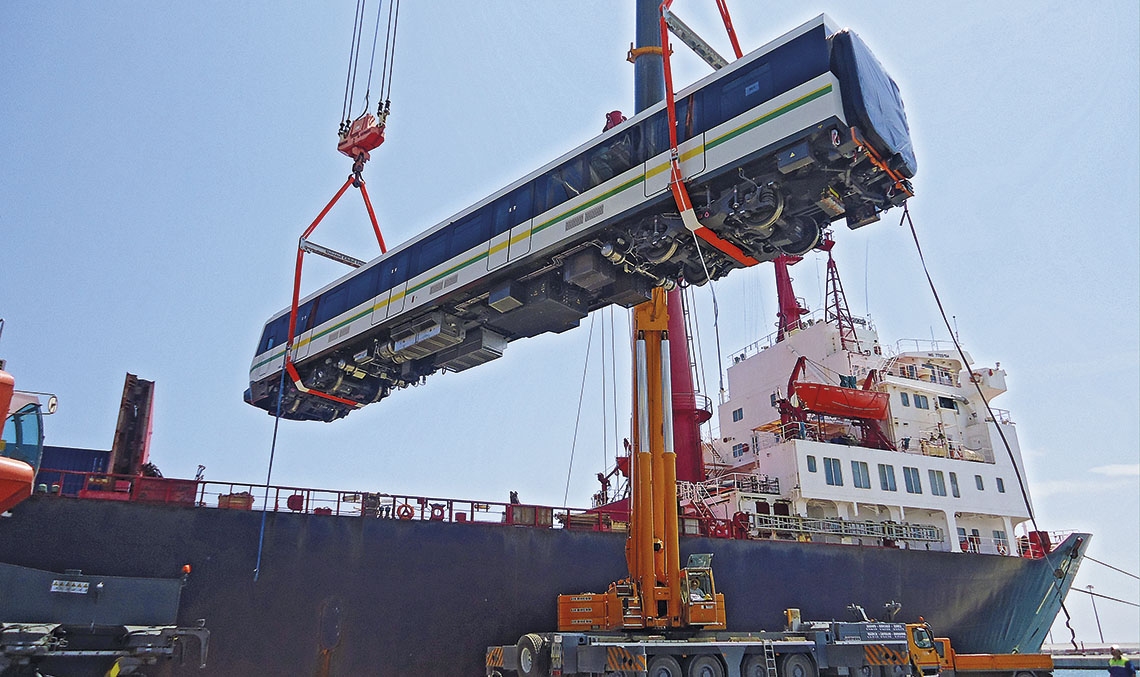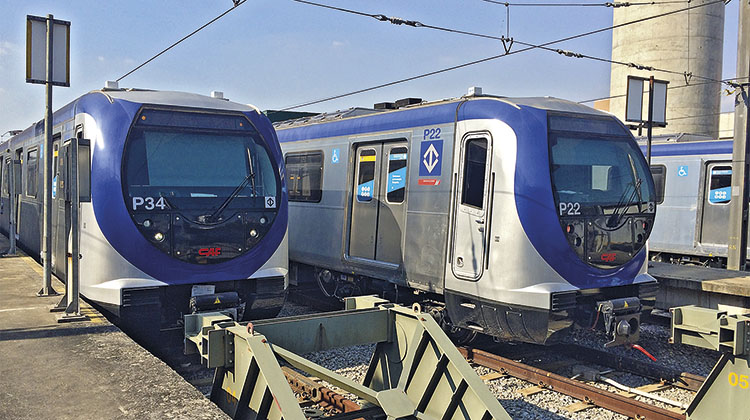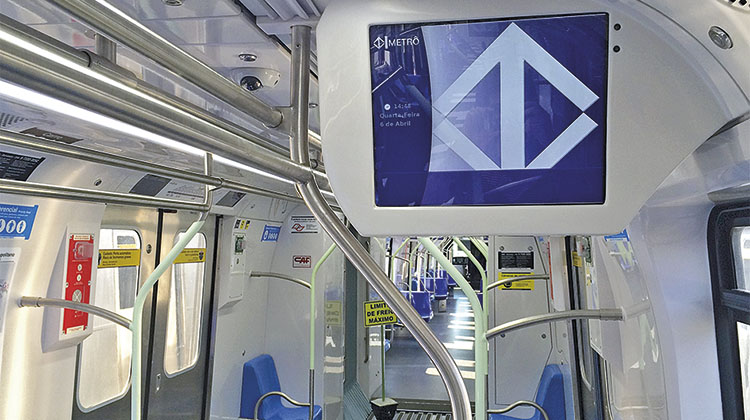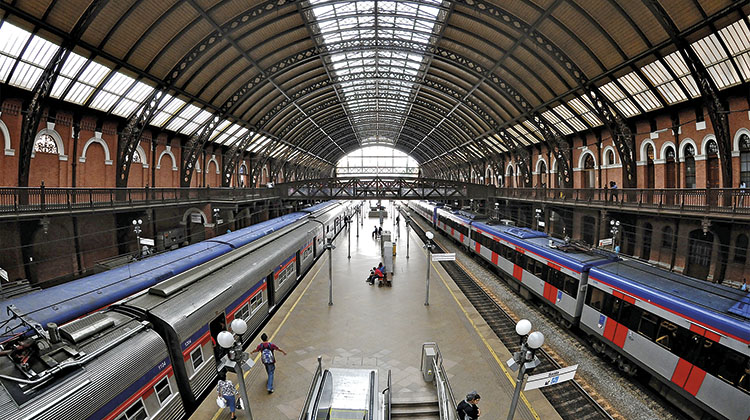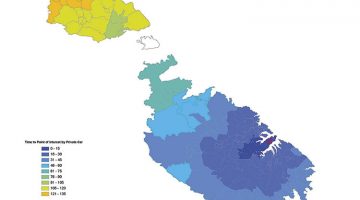Although some elements and processes of rolling stock manufacturing involve mass production, no two orders are the same: each design, operator and railway network has its own individual characteristics, even if the supplier is the same. In addition to this, there is the fact that the many components and systems a train is equipped with, from the air conditioning to the brakes or the traction, are produced by different companies. These must be integrated into the design produced by the manufacturer, who delivers the rolling stock to the operators who will put it into circulation.
A high-speed train has very different features and characteristics than a tram, a commuter train or a freight train. Even so, what they all have in common is that they require experts to validate the design and to supervise the different tests (static and dynamic) that are carried out, both at the factory and on tracks, up until the train’s entry into service. The supervisors must assure from the very beginning that the rolling stock being assembled meets technical specifications and is adapted to the needs of the end client. This is the reason for the fundamental importance of validating the initial design.
They must also have detailed knowledge of international railway regulations, as well as those of the particular countries concerned. Supervisors must also be familiar with standards that apply to the main and auxiliary elements, both structural elements (body, axles, wheels, etc.) and equipment and systems (traction, brakes, train safety system, passenger information system, conduction system, emergency system, etc.). The supervision process must guarantee the reliability and technical compatibility of all these elements.
All types of trains require experts to validate designs and supervise the different tests carried out up until their entry into service
Ineco has extensive experience in this field, with professionals whose specific knowledge of each component make it possible for trains to be functional, safe and comfortable for users. This experience covers all types of rolling stock from all suppliers: CAF, Alstom, Siemens, Bombardier, etc. In the case of new railway projects, clients may also require technical assistance prior to the purchase of rolling stock. In 2012, Ineco collaborated with the Santiago de Chile Metro in preparing technical specifications for public tenders and in assessing bids for the modernisation of its fleet.
In Spain, the company has over 20 years’ experience in this area, having supervised over 200 high speed and over 750 conventional trains, 290 locomotives and around 75 metro trains and trams, as well as 1,400 freight wagons. Noteworthy projects abroad include numerous works carried out in Brazil for CAF and Alstom (suppliers to the Compañía Paulista de Trenes Metropolitanos, CPTM), in Colombia, where the Medellín Metro is renewing its fleet with new CAF units, and in Ecuador, which has purchased rolling stock from the old Feve or Euskotren for its railway network, for which it launched renovation works in 2008.
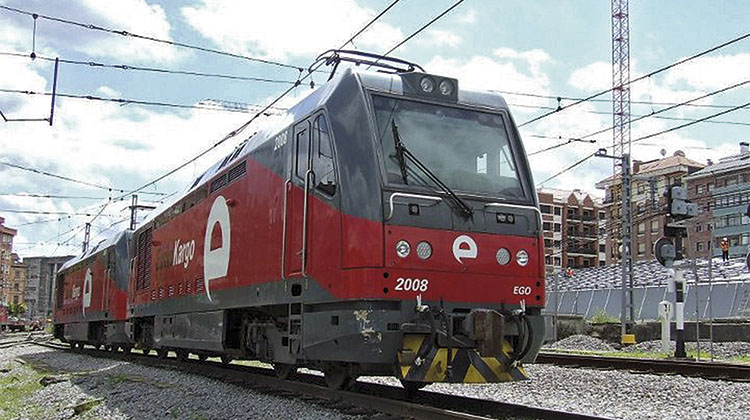
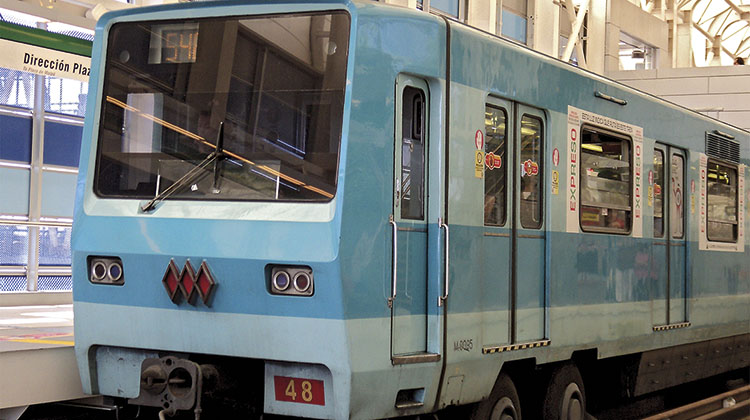
The tasks of design validation, review and supervision are applicable not only to new rolling stock, but also when updating operational units that require modernisation. This is the case with the forty-nine NS74 trains manufactured by Alstom for the Santiago de Chile Metro in the 1970s. Ineco is providing technical assistance for the detailed engineering and design for the process of modernising the fleet, working in conjunction with Alstom engineers in Spain.
The same is true with second-hand or surplus rolling stock which is sold on to another operator (generally abroad) and needs to be adapted. This was the case with the three new TD 2000 series locomotives manufactured in Spain in 2006 by the company Ingeteam, which were surplus to the requirements of the Basque operator Euskotren. The machines, accompanied by fifteen 3,500 series trailer cars (with no additional costs), were acquired by Ecuador’s railway network for its star product, the Tren Crucero (‘Cruise Train’) tourist line between Durán and Quito. Ineco, which also carried out the original testing for Euskotren, supervised the tune-up of the units for their new function, which is very different than their original intended use in a freight project.
For that reason, the machines have a powerful electro-diesel dual-mode traction system, large loading capacity and efficient braking systems. Their sturdiness and power make them very suitable for their new destination, as the ‘Cruise Train’ is a 450 kilometres of unelectrified line running through a mountainous region known as the ‘Avenue of Volcanoes’, where it reaches altitudes of over 3,600 metres. For that reason, the locomotives will only use diesel traction. In addition, the units required modification to travel on the Ecuadorian network, where the gauge is 1,067 millimetres, compared to the 1,000 millimetre gauge for which they were originally designed.
Works for the Medellín Metro
Metro de Medellín, a public company owned by Medellín city hall and the regional government of the department of Antioquia, is responsible for managing the network, which comprises two conventional metro lines, two metrocable lines (with two more to be added soon) and the Ayacucho tram line, opened in October 2015.
Having been in operation for 20 years, the company is now renewing its fleet; this has involved the purchase of new trains from the Spanish company CAF. In 2011, Ineco was commissioned to supervise the design and manufacturing of the trains, as well as their testing in the factory and on tracks and the subsequent entry into service of the initial batch of 13 three-car trains, equipped with the latest technology. In 2015, the company supervised a second batch of another 3 units as well as the on-board signalling equipment (ATC) for 26 drivers’ cabs. With the new CAF trains (20 in total), Metro de Medellín plans to increase transport capacity by 36 %, which will translate into reduced congestion at peak times.
In addition to this work, Ineco has carried out other projects for Metro de Medellín, such as feasibility studies for the recovery of the old Antioquia railway, renamed the ‘Valle de Aburrá Multi-purpose Railway System’. The project consists in renovating 80 kilometres of disused track for the transport of passengers and urban waste through the Aburrá Valley. The valley, created by the basin of the river Medellín, is a narrow stretch of land in the centre of the region of Antioquia and has seen intense urban development. In addition to the city of Medellín there are a further 10 municipalities, constituting an urban area with a population of over 3.3 million. For that reason, Medellín’s public transport system is designed as a multimodal network named the Valle de Aburrá Integrated Transport System (SITVA, for its Spanish initials) with stations that allow passenger to change mode of transport (for example, from tram to cable car, bus to metro or metro to bicycle). In 2010, Metro de Medellín implemented a metro and metrocable traffic control system based on Adif’s Da Vinci platform, developed by Indra. Two years later, it also incorporated Metroplús buses, Ineco took responsibility in this in the supervision and technical management of the extension of the system, which enables any incidents in the service to be managed and handled in real time.
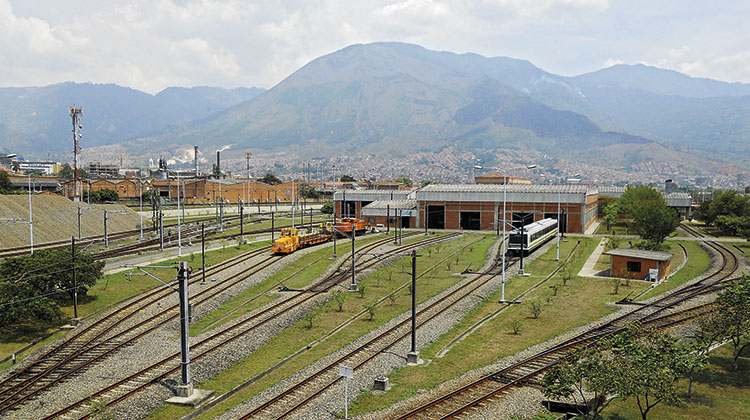
Medellin Metro facilities.
São Paulo Metro and Commuter network
For that reason, the city government has in recent years been implementing enlargement and improvement plans, including both the construction and extension of existing lines and the renovation of equipment and rolling stock, as well as intermodal connections between the bus, train and metro networks. In 2015, Ineco and its local partners carried out two projects, supervising the manufacturing and commissioning of new rolling stock. The objective in both cases is to ensure that the client receives the final product according to schedule and with the required quality standards. For the commuter train network, the company completed its work supervising the purchase of nine electric units of eight cars each, for Line 11–Coral, which measures 50.8 kilometres and has 16 stations, and which is being enlarged with financing from the International Bank for Reconstruction and Development (IBRD). The new trains, which have already been delivered, have a capacity of 2,600 passengers and are compatible with the rest of the CPTM flete.
Working for Metrô SP, Ineco also supervised in 2015 the manufacturing and commissioning of 26 new trains for line 5–Lilas, which is to be extended by 11.4 kilometres with 11 new stations. The new trains have five cars each, with a capacity for up to 1,500 passengers. The works, with financing from the World Bank, started in 2013 and are expected to be completed in 2016. Ineco’s services include analysing the construction documents, providing assistance during conformance testing and inspecting and monitoring the manufacturing process.


